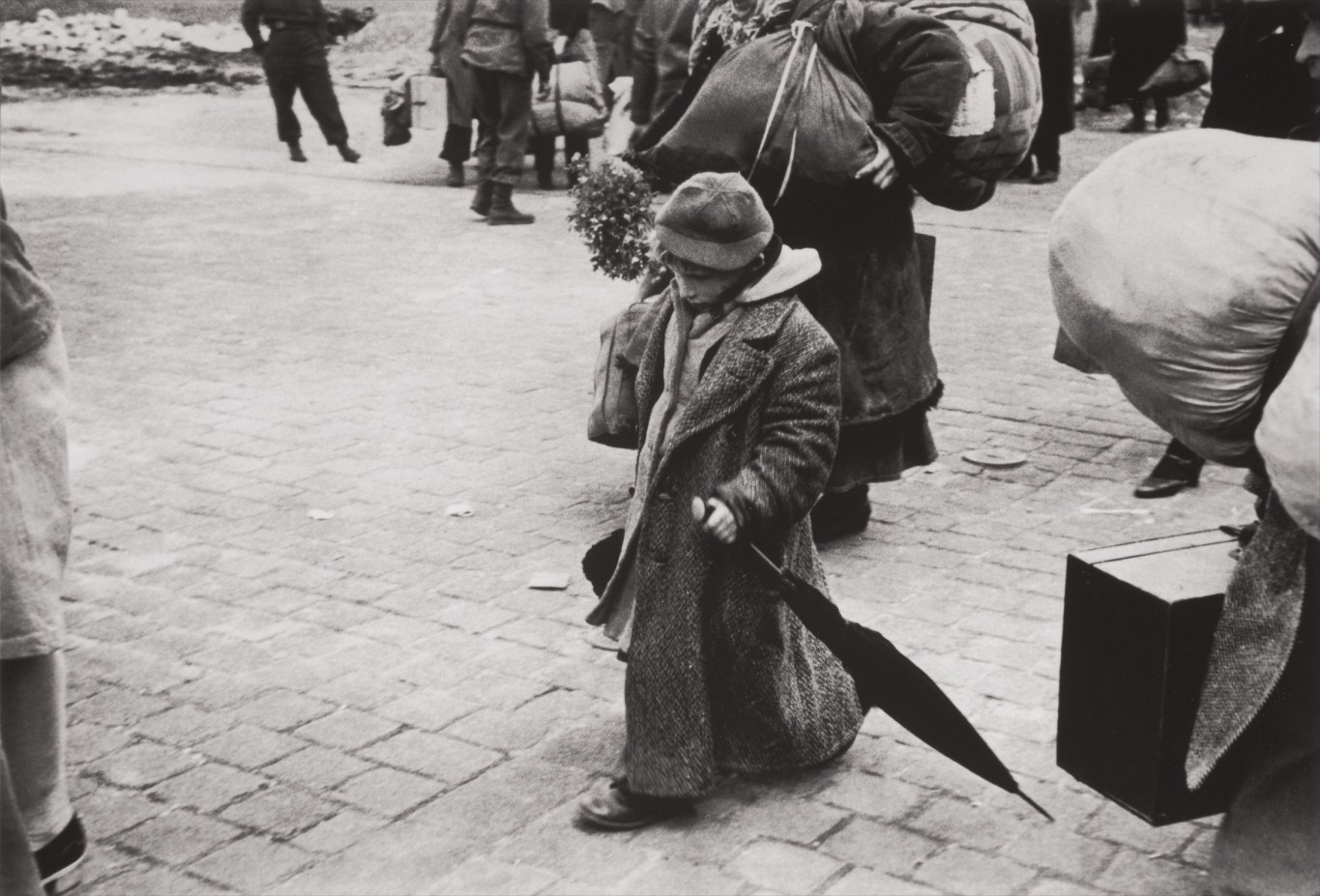

64
Henri Cartier-Bresson
A Soviet child who was deported with his parents, returning to his homeland, Transit Camp, Dessau, Germany
Full-Cataloguing
Henri Cartier-Bresson’s extensive travel almost always brought him to the center of modern history as it unfolded, photographing searing moments, such as in post-war Dessau (lots 64-65), that have come to define our shared visual history. In all of this however, he never veered from a consummate humanism. Indeed, one of Cartier-Bresson’s great gifts was his ability to capture moments of the everyday lives of people living through extraordinary times. From the 1930s to the 1990s, Cartier-Bresson continuously observed the nuanced idiosyncrasies of each culture, time, and place, which, when viewed together, form a unified portrait of a collective humanity in a century marked by conflict. Traveling across geographic borders, from the streets of Yugoslavia (lots 71 & 72), the churches of Poland (lot 70), and through the majestic Austrian and Hungarian country-sides (lots 66 & 63), Cartier-Bresson’s Europeans are an unending source of fascination and visual interest.
Henri Cartier-Bresson
French | B. 1908 D. 2004Candidly capturing fleeting moments of beauty among the seemingly ordinary happenings of daily life, Henri Cartier-Bresson's work is intuitive and observational. Initially influenced by the Surrealists' "aimless walks of discovery," he began shooting on his Leica while traveling through Europe in 1932, revealing the hidden drama and idiosyncrasy in the everyday and mundane. The hand-held Leica allowed him ease of movement while attracting minimal notice as he wandered in foreign lands, taking images that matched his bohemian spontaneity with his painterly sense of composition.
Cartier-Bresson did not plan or arrange his photographs. His practice was to release the shutter at the moment his instincts told him the scene before him was in perfect balance. This he later famously titled "the decisive moment" — a concept that would influence photographers throughout the twentieth century.